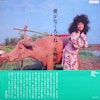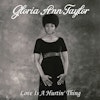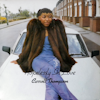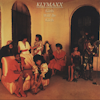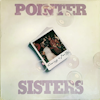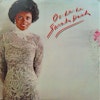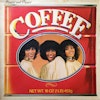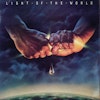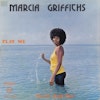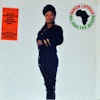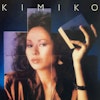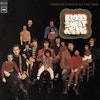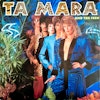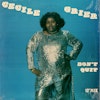After Chess shuttered its doors in the 1970s, Barge moved to Stax Records when he was hired by Al Bell to work for the Memphis label’s Gospel Truth imprint, arranging hits for the likes of Rance Allen, Rev. Maceo Woods, and Rev. Jesse Jackson’s PUSH Choir. In his time off, he helmed sessions for Inez Andrews’s monster crossover hit “Lord Don’t Move the Mountain” and the Beautiful Zion Baptist Church’s gospel-soul anthem “I’ll Make It Alright.” Just before Stax folded, Barge jumped ship to work as an independent, working on Natalie Cole’s demo recordings and ultimately winning a Grammy for “Sophisticated Lady (She’s a Different Lady),” one of her first chart-toppers. In the mid-1970s, Barge also launched an acting career—to date, he’s appeared alongside Chuck Norris, Steven Seagal, Ashton Kutcher, Gene Hackman, Harrison Ford, and Tommy Lee Jones in action flicks The Fugitive, Code of Silence, and Under Siege.
Barge still works in the biz as a producer, arranger, and performer today—in fact, the night before this interview, the Chicagoan logged in a late night onstage. Yet after just a few short hours of sleep, he sounds rested and reflective about the many years he’s spent moving within the city’s multi-layered music scene. “We had creative differences and kind of fell out with each other,” he recalls of his working relationship with Charles Stepney, which ended some three-and-a-half decades ago, “but we were on speaking terms, and we had plenty of respect for each other. He died too young.”
What prompted the move from Norfolk to Chicago?
Musically speaking, things weren’t going very well in Norfolk. I decided to get out of there, and I’d always been attracted to Chicago. I had a record out on Chess in 1955, so I had a relationship with them. I asked Phil Chess if he had a job, and he offered me one right over the phone. When I got to Chicago in the second or third week of June ’64, in came Oliver Sain, who brought in Fontella Bass and Bobby McClure. I ended up working with them. The Chess people thought Fontella was really great, and they decided to get a contract on her, which ended up being one of my first assignments.
How did you initially hook up with Charles Stepney?
I was copyrighting music at Chess, and I needed some help. I needed a musician, someone who was good in music theory. Charles Stepney came in for some session on vibraphones. I started talking to him and found out that he could do this, so I suggested Chess hire him, and he got on the staff.
Charles was a product of the Chicago school system, and he was in that circuit with all the Chicago jazz musicians, playing clubs around the South Side. And at the time, I was still trying to familiarize myself with Chicago. I wasn’t making much progress getting into the circuit, but I fell in with the blues guys, eventually getting into the Morris Ellis Band, which was one of the bigger bands in town working casual dates and private affairs at some of the more exclusive social clubs, the Urban League and things like that.
I was doing some arrangements for Chess artists, and Charles and I decided to get together and try to collaborate. One of our first assignments was a Muddy Waters session, Brass and the Blues. We started doing sessions for various other artists, Billy Stewart and other people. All of a sudden, Marshall Chess decided to do something with a group called Rotary Connection. Charles went off on his own to do that, and I went off on my own to do other artists, like Jesse Anderson, Little Milton, and a few others.
And then you and Stepney reunited to collaborate on Electric Mud and This Is Howlin’ Wolf’s New Album.
Marshall got us together to do a special project—what he called more contemporary arrangements, to compete with all of the artists around the world who’d been taking the Muddy Waters and Howlin’ Wolf syndromes and making a lot of money off them. By this time, Marshall Chess had traveled around the world with Mick Jagger and the Rolling Stones, and he got the idea from that experience. He thought, these guys are making all the money, and the guys who influenced them aren’t. Maybe we could do something with Muddy Waters, who the Rolling Stones had gotten their name from. Muddy had been left out of the mix—he and Wolf were small artists at this point, so Marshall decided to crack the market.
Tell me about Electric Mud.
We pitched the idea to Muddy. He wasn’t thrilled about it, because it would take him out of his comfort zone, but we were doing songs that he’d been doing all his career—Willie Dixon songs that he already knew—and we told him don’t change a thing. Sing the way you’re singing, and we’ll change the music. He really didn’t have to do any homework to a great degree, so he found it easy to do. We put together a rhythm section that could really do this project, with Pete Cosey and a few others. Although he feared the project at first, I think Muddy enjoyed it once he got into it. He was doing traditional blues with his own rhythm section, and he was surprised when he heard our arrangements. They put him in a place he’d never dreamed of, which gave him mixed emotions.
Did he ever perform your arrangements live?
Muddy loved it [in the studio], but once the record came out, he went off on his own more or less. Then he got hurt in a car wreck—he wasn’t expected to live, and he could hardly walk for a long time, so he didn’t perform as much.
What was working with Howlin’ Wolf like?
Wolf really didn’t like the idea, period. His personality was very different from Muddy’s—he was a real strong, big, and intimidating-looking man. He didn’t really want to do it, but Marshall talked him into it. At the time, his career was fading a bit and he needed a shot in the arm, you know? So, reluctantly, he did it. He fussed a whole lot, but we got him through it.
How did the sessions go down?
Well, we didn’t call those guys right away! We got into a creative session to try to get the arrangements laid out, and we started the practices first. We were just using what we knew about music, going for a more modern hard rock arrangement. We didn’t have a road map here—we were basically inventing guitar and bass lines and drum patterns. But a lot of the rock groups had been to Chicago already—the Rolling Stones had been here twice, recording two different sessions at Chess in ’63 and ’64. We also had jazz artists coming in: Ramsey Lewis, Groove Holmes, and you name it coming in and out; so, basically, we knew about rock firsthand. Most of the basic rhythms were cut live, although in a few cases we added a sitar, played by Pete Cosey.
You were also Daddy G, a Chess recording artist.
In ’65, we did an album, Dance with Daddy G, where we took a bunch of dance songs and put ’em together. We did these tracks kind of quick, using Oliver Sain’s musicians on the session. Working at Chess was fun! When I first got there, I was put in charge of the rhythm section, which, in ’64, included Maurice White and Louis Satterfield…
Who left Chess to form Earth, Wind & Fire, right?
Satterfield didn’t leave, but Maurice White quit the Chess rhythm section to go work with Ramsey Lewis for about four years. While there, he was experimenting in Chicago with little groups. He had a different one every weekend. When he left Ramsey, he went to Los Angeles, carrying some guys with him. They formed the group out there and got a contract. At first, they didn’t have a lot of success, but it didn’t bomb out either. I’d see Maurice from time to time when he was out there. Satterfield stayed in Chicago working with various bands, and then when Maurice got the first big Earth, Wind & Fire hit at the top of the ’70s, he hired a horn section to go along with the band, which included Don Myrick, a Chess sessions player, and Louis Satterfield, who played trombone as well as bass. He also began a collaboration with Charles Stepney, who was hired as an arranger for Earth, Wind & Fire.
What were you doing at that time?
Chess went out of business, and I began working as a freelance musician when, in ’73, I got the job with Stax Records, working with Dave Clark and Mary Peak at Gospel Truth. I’d travel to Memphis during the week and come home on weekends. At the time, Stax was beginning to fade and go downhill. They were having trouble with payola and stuff like that, and the company just collapsed. Just before it happened, they let me go. In ’76, I was producing and arranging for Natalie Cole, who was shopping for a record deal. I did four songs, but when Marvin Yancy and Charles Jackson brought her in to put the voices on, we fell out during the process. It took them about six months to find a deal for her, and once the album hit, they called me back to work on all the rest of her work.
You launched your acting career around then.
That goes back to Muddy Waters. Back at Chess, in around ’69, I was approached by this young guy from an ad firm trying to get a blues guy to do a TV commercial. I don’t know why, but they sent him to me. He says, “Look, I want to do this session with a blues artist. Do you think I could get Muddy Waters?” I said, “Muddy can’t read or write. If you have copy, that’s gonna be a problem, but we can rehearse him or coach him if it’s a thirty-second or minute-long spot.” Muddy consented to do the commercial, which was for Hamm’s Beer.
Fast-forward to the ’70s. Now this young guy, Chuck Stepner, is in Hollywood doing something. He ran into this producer Andy Davis, who told him about a new script. Stepner says, “I know just the guy for a particular part—Gene Barge.” I got the call; I went in and read for the spot, and they looked at me and said, “Great,” and started pitching this plot. I ended up with a leading part in Stony Island, but it was a small budget, non-union project, and they didn’t have a good distributor. The movie died on the vine, but it launched a career for Andy Davis, who later on got this assignment to do Code of Silence, a Chuck Norris movie. He called me out of gratitude, I guess. Then he called me to do Above the Law with Steven Seagal, and I also did Under Siege, and The Fugitive with Tommy Lee Jones and Harrison Ford. Most recently, I did The Guardian with Kevin Costner and Ashton Kutcher, but I just play a musician in that one.
